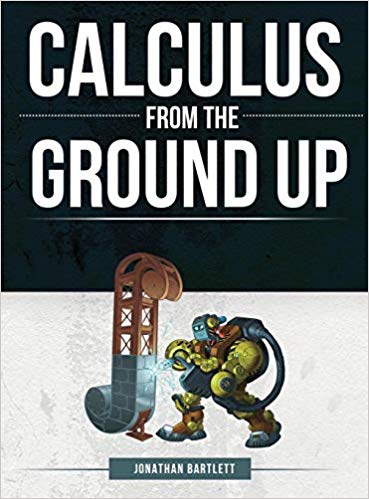Doing the Impossible: A Step-by-Step Guide
Often, in life as in calculus, when our implicit assumptions as to why something can’t be done are made explicit, they can be disprovenMany people think that doing the impossible is, well, impossible. As it turns out, there is a step-by-step process by which you can solve impossible math problems. I don’t just mean hard problems or problems that someone might incorrectly believe are insoluble. I mean really, truly, actually impossible problems. Don’t believe me? Read on.
I am always amazed when I read calculus textbooks. They are the most dry and boring presentations of mathematics I have ever seen, especially if you realize that calculus offers some of the most amazing insights. Unfortunately, most mathematics texts teach only the mathematics, never the insights. I felt so frustrated by this gap that I wrote my own textbook, Calculus from the Ground Up, in which I try to teach both.
One of the topics that you should learn in calculus is how to solve impossible problems. In the first semester, I always tell students, “Here are some examples of impossible problems, and next semester we will learn to solve them.” As an example of an impossible problem, think of the calculator functions, sine and cosine. It is impossible to write these functions in terms of standard algebraic functions (i.e., polynomial functions). It is literally impossible. It is provably impossible. However, every calculus student learns a method for writing sine and cosine just in this way.

To understand how, let’s stop and think about what we mean by the word “impossible.” Almost always, a person who says “it is impossible to do X,” really means, “Using a set of typical assumptions that I don’t even feel are worth discussing, it is impossible to do X.” These assumptions are almost always unstated because they are so obvious to the speaker that discussion seems needless. They are self-evidently valid assumptions.
The key, then, to doing the impossible is to take a statement of impossibility and determine what, exactly, its underlying assumptions are. Take what is implicit and make it explicit. By doing this, you can often find a background assumption which, if removed, would show the “impossibility” to be untrue.
Going back to our mathematics example, it is indeed impossible to write sine and cosine in terms of standard polynomials. However, a key assumption makes this impossibility proof valid. The assumption is that we write sine and cosine in terms of a finite number of polynomial terms. If, however, we allow ourselves an infinite number of polynomial terms, we can indeed write sine and cosine in terms of polynomial functions.
As you might imagine, making our assumptions explicit could go the other way. When we find the assumption that makes an impossibility proof valid, that assumption might itself be perfectly valid too. Sometimes it is, and sometimes it isn’t. In the case of writing sine and cosine in terms of polynomial functions, it led to the ability to at least describe certain functions in new ways. Doing so led to whole new understandings of mathematics.
While we can’t actually do an infinite number of operations, we can at least understand how those different operations relate to each other. It also allowed us to extend our understanding of many of these functions as well because the behavior of polynomials is well-defined and well-understood.
So, if you run into a truly impossible situation, follow the mathematicians! Finding solutions to impossible problems is usually a case of identifying the unstated assumptions and figuring out which ones need challenging.
Also by Jonathan Bartlett on calculus:
Walter Bradley Center Fellow discovers a longstanding flaw in an aspect of elementary calculus. The flaw doesn’t lead directly to wrong answers but it does create confusion.
